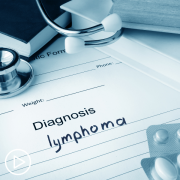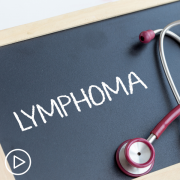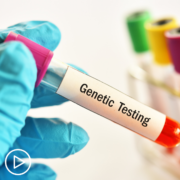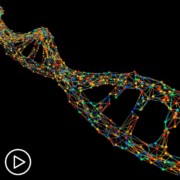How Does Your DLBCL Subtype Impact Your Treatment Options?
How Does Your DLBCL Subtype Impact Your Treatment Options? from Patient Empowerment Network on Vimeo.
How does a patient’s diffuse large B-cell lymphoma (DLBCL) subtype impact their treatment options? Expert Dr. Robert Dean explains the most widely used DLBCL treatment approach as well as options for highly aggressive subtypes.
Dr. Robert Dean is a hematologist/medical oncologist at Taussig Cancer Institute at the Cleveland Clinic. Learn more about Dr. Dean, here.
See More From The Pro-Active DLBCL Patient Toolkit
Related Programs:

|

|
Transcript:
Katherine:
So, how does a patient’s subtype impact their treatment options?
Dr. Dean:
It’s getting there slowly. Right now, the most widely used initial treatment for patients with diffuse large B-cell lymphoma is still the monoclonal antibody rituximab (Rituxan) and the combination chemotherapy regimen called CHOP, or R-CHOP as it’s called for short all together. And for patients with lymphomas that are not the so-called double-hit type, at least in our center, R-CHOP is still the standard, most commonly used approach to treat those cases. For the double-hit cases, studies have shown that their results with R-CHOP treatment are significantly worse than what you see with the cases that are not double-hit lymphomas.
And because of that, a lot of lymphoma treatment programs have looked to other approaches to treatment that are a little more intensive, similar to what we use for highly aggressive lymphomas, such as Burkitt lymphoma, to see if we can do better for those patients. And the one that we most commonly use here at our center for the double-hit lymphoma cases is a regimen that’s called R-EPOCH, where you take the drugs that are in the R-CHOP, add an extra chemotherapy medicine, and give them in a different manner that provides a more prolonged exposure to the chemotherapy drugs with each round of treatment and also provides for some tailoring of the chemotherapy doses from one round of treatment to the next.
There aren’t any great controlled trials yet that prove that stronger treatment regimens like R-EPOCH are better for the double-hit cases of large cell lymphoma than the tried-and-true R-CHOP regimen that’s used for most other situations.
But there are what we call uncontrolled studies or retrospective studies that have looked at patients treated with those higher intensity regimens, and they at least suggest that patients treated with those approaches look like they do better than what you would have expected with the R-CHOP approach. And then there are a few less common subtypes of large cell lymphoma that are more specific and are treated in more unique ways.
For example, large B-cell lymphoma can arise in the brain only in rare cases and when that occurs it’s treated using an approach that’s really geared toward ensuring that you’re giving chemotherapy drugs that can effectively get into the brain tissue and attack the lymphoma cells there. Once in a while, you see someone who’s got both of those situations going on at once, lymphoma growing in the lymph node system or other places in the body outside of the nervous system, and lymphoma growing in the nervous system at the same time, and you need to make adjustments in how you treat those cases, too.











